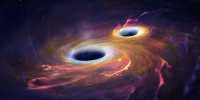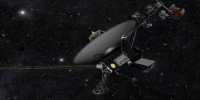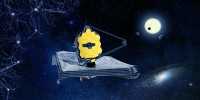Have you ever considered how large your computer’s hard drive would have to be to hold all of the data in the universe? A physicist has supplied an approximation. The observable Universe’s particles would add up to 6×1080 bits of information. That is a six with 80 zeros behind it, for the sake of comparison. 8,000,000,000,000 bits (that is simply 12 zeros) make up a terabyte. Physicist Dr. Melvin Vopson used two easy ways to calculate the universe’s information content, as described in the journal AIP Advances. He began by examining the estimate of the number of observable matter particles in the universe. Then he multiplied it by the amount of information each particle has.
The Eddington number, which is the number of protons in the visible universe, used to calculate the first number. Vopson elaborated on the fact that visible stuff is not only made up of protons. Claude Shannon’s Information Theory used to estimate the second number, the information contained in each particle. Each elementary particle in this study amounts to 1.509 bits of data.
In a statement, Dr. Vopson of the University of Portsmouth said, “The information capacity of the universe has been a topic of controversy for nearly half a century.” “Various attempts have been made to estimate the universe’s information content, but in this study, I describe a unique approach that also postulates how much information may be packed into a single elementary particle.” A prior estimate from almost two decades ago by Seth Lloyd had a much higher number, but it also included a very different derivation and interpretation of the available data. Even Vopson’s previous work had varied estimations based on different assumptions.
Different approaches to answering this question could lead to a better overall knowledge of the data. Despite appearing in physics equations and playing a key role in things at the edge of physics such as black holes, defining information is challenging. “This is the first time this approach has been used to measure the universe’s information content, and it yields a clear numerical prediction,” Vopson explained. “Even if the numerical forecast isn’t completely accurate, it provides a viable channel for experimental testing.”
Thompson’s current computation intentionally excludes the miniscule amounts of antimatter existing in the cosmos, as well as neutrinos, which are extremely light and non-electrically charged particles. Dark matter, a mystery material that may exceed ordinary matter 5-to-1, likewise ignored.
















